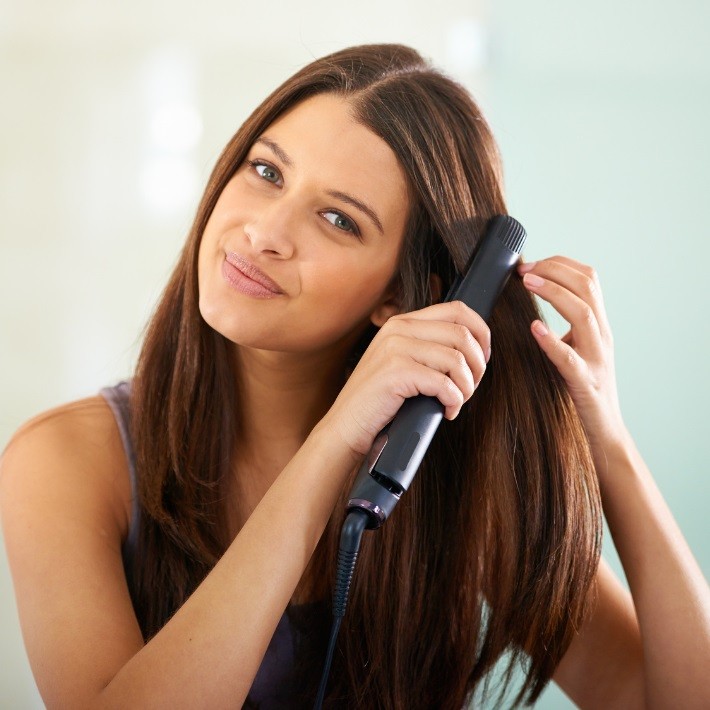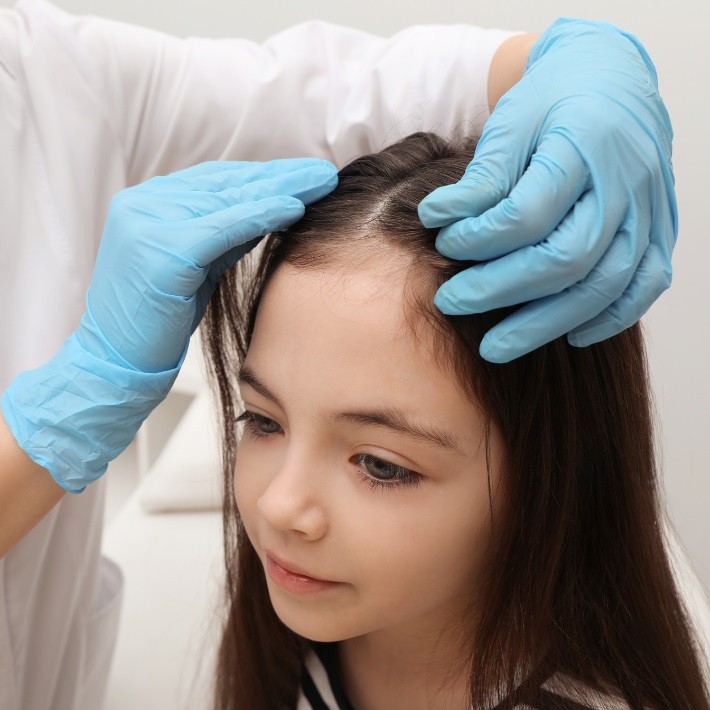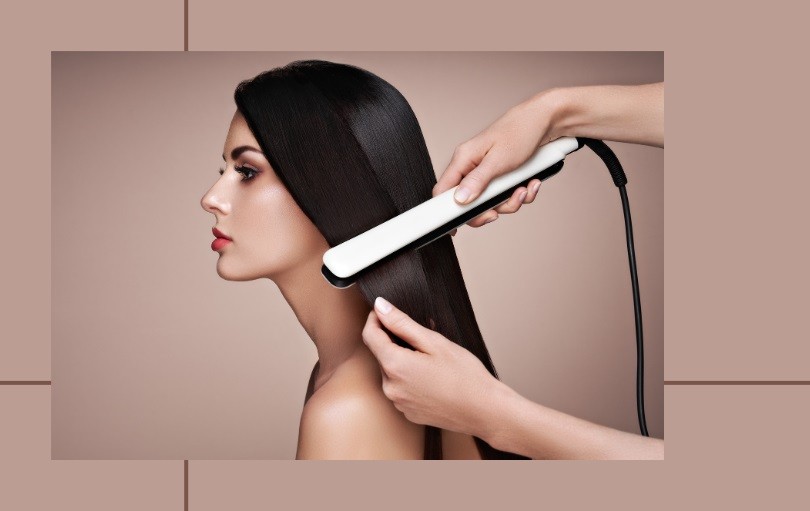Last Updated on March 28, 2025
Head lice are pesky parasites that can cause extreme discomfort and embarrassment. With numerous remedies and treatments available, one question still lingers: Does straightening your hair kill lice? In this article, we’ll dissect this popular belief and provide you with the ultimate guide to understanding lice and their behavior. Let’s jump right in!
The Straight Truth About Lice and Hair Straightening

Related: Does Hair Straightener Kill Lice?
Does Straightening Your Hair Kill Lice?
To answer this burning question, it’s essential to understand that straightening your hair might kill some lice, but it’s not a foolproof method. The heat from the straightener can potentially eliminate adult lice and nymphs that come into direct contact with the iron plates. It’s unlikely to destroy all the lice and their eggs (nits) hiding in your hair.
Lice Lifecycle: A Quick Overview
Knowing the life cycle of lice can help clarify why hair straightening is not an effective solution. The lice life cycle comprises three stages:
- Nits (eggs): Lice eggs, called nits, are laid by the female louse near the scalp. They’re firmly attached to hair shafts and need warmth to hatch.
- Nymphs: After a week, nits hatch into nymphs (baby lice). These nymphs need blood to survive and grow.
- Adult lice: In about 10 days, nymphs mature into adult lice, which can reproduce and start the cycle anew.
Why Hair Straightening Falls Short
Ineffective on Nits
As mentioned earlier, hair straightening might kill some adult lice and nymphs, but it’s not effective in destroying nits. Nits are protected by a hard outer shell that can withstand the heat from a hair straightener. Furthermore, nits are usually located close to the scalp, which makes it challenging to apply sufficient heat without risking burns.
Risk of Damage to Your Hair
Repeated use of hair straighteners can cause heat damage, leading to dry, brittle hair, split ends, and breakage. Relying on this method to kill lice could worsen your hair’s overall health.
Related: Will Light Ash Blonde Cover Orange Brassy Hair?
Alternative Lice Treatments

Now that we’ve established that hair straightening isn’t the best solution, let’s explore alternative lice treatments.
Over-the-Counter Lice Treatments
Many over-the-counter treatments effectively kill lice and their eggs. These products contain ingredients like permethrin and pyrethrins, which target the nervous systems of lice. Follow the instructions carefully for the best results.
Prescription Medications
For persistent infestations, consult a healthcare professional. They may prescribe a stronger medication that targets both lice and their eggs.
Home Remedies
Some home remedies, like applying olive oil, mayonnaise, or vinegar, can help suffocate and kill lice. These methods aren’t backed by solid scientific evidence, so their effectiveness may vary.
Preventive Measures
Prevention is always better than cure. To avoid lice infestations, educate yourself and your family on avoiding head-to-head contact, not sharing personal items like combs and headphones, and washing bedding and clothing regularly.
Related: How To Get Rid Of Brassy Hair Without Toner?
Debunking Lice Myths and Misconceptions
Myth 1: Only People with Poor Hygiene Get Lice
Fact: Lice can infest anyone, regardless of their personal hygiene. They’re attracted to human blood, not dirt or grime. This misconception often leads to unnecessary shame and stigma for those dealing with lice infestations.
Myth 2: Lice Can Jump or Fly
Fact: Lice cannot jump or fly. They crawl from one hair to another during head-to-head contact, which is the primary mode of transmission. This is why lice are more common among children, who tend to engage in close physical contact with their peers.
Myth 3: Pets Can Transmit Lice to Humans
Fact: Human head lice are species-specific and cannot infest pets or vice versa. While pets can carry their own types of lice, these parasites are not transferable to humans. So, you don’t need to worry about your furry friends spreading lice to your family.
Myth 4: Lice Are Resistant to All Treatments
Fact: Although some lice populations have developed resistance to certain over-the-counter treatments, there are still many effective options available. If one treatment doesn’t work, it’s crucial to explore alternatives, such as different over-the-counter products, prescription medications, or home remedies. Consulting a healthcare professional can also help you find the right solution for your specific situation.
Supporting Your Child During a Lice Infestation
Offering Emotional Support
Lice infestations can be distressing for children, often leading to teasing from their peers. Offer emotional support by listening to their concerns and reassuring them that lice infestations are a common issue that can be resolved.
Educating Them About Lice Prevention
Teach your child about lice prevention strategies, such as avoiding head-to-head contact, not sharing personal items like combs and hats, and regularly washing their bedding and clothing. This will empower them to take control of their situation and prevent future infestations.
Encouraging Open Communication with School and Friends
Promote an environment where your child feels comfortable discussing their lice infestation with teachers and friends. This can help prevent the spread of lice in their social circle and reduce feelings of isolation. Encourage your child to be honest and educate their peers about the misconceptions surrounding lice.
Involving Your Child in the Treatment Process
Engage your child in the lice treatment process by explaining the steps and letting them participate in age-appropriate tasks. This involvement can help alleviate anxiety and give them a sense of control over the situation. Additionally, it can create an opportunity for bonding and building trust between you and your child during this challenging time.
Frequently Asked Questions
1. Can lice survive on straightened hair?
Yes, lice can survive on straightened hair. Straightening your hair might make it more difficult for lice to grip onto the hair shafts, but it won’t prevent them from infesting your hair altogether.
2. Does dying or bleaching your hair kill lice?
Dying or bleaching your hair may kill some lice, but it’s not a reliable method for eliminating an infestation. Chemicals in hair dyes and bleach can be harmful to lice, but they are not specifically designed to eradicate them or their eggs.
3. How long can lice survive away from the human scalp?
Lice can survive for about 24 to 48 hours away from the human scalp. They rely on human blood for nourishment, so they won’t survive long without a host.
4. Can you see lice with the naked eye?
Yes, you can see adult lice and nymphs with the naked eye. They’re about the size of a sesame seed and can be grayish-brown or reddish-brown in color. Nits are smaller and can be challenging to spot without a fine-toothed comb or magnifying glass.
5. Are lice more common in children than adults?
Yes, lice infestations are more common in children, particularly those aged 3 to 11 years old. This is because children tend to have closer physical contact with their peers, which facilitates the spread of lice.
The Final Verdict: Does Straightening Your Hair Kill Lice?
Straightening your hair is not a reliable method for eliminating lice. While it might kill some adult lice and nymphs, it falls short of destroying their eggs. Moreover, repeated use of hair straighteners can damage your hair. Instead, opt for alternative lice treatments, such as over-the-counter products, prescription medications, or home remedies, and focus on preventive measures to avoid infestations. Remember, it’s always wise to consult a healthcare professional for personalized advice on tackling lice problems.

